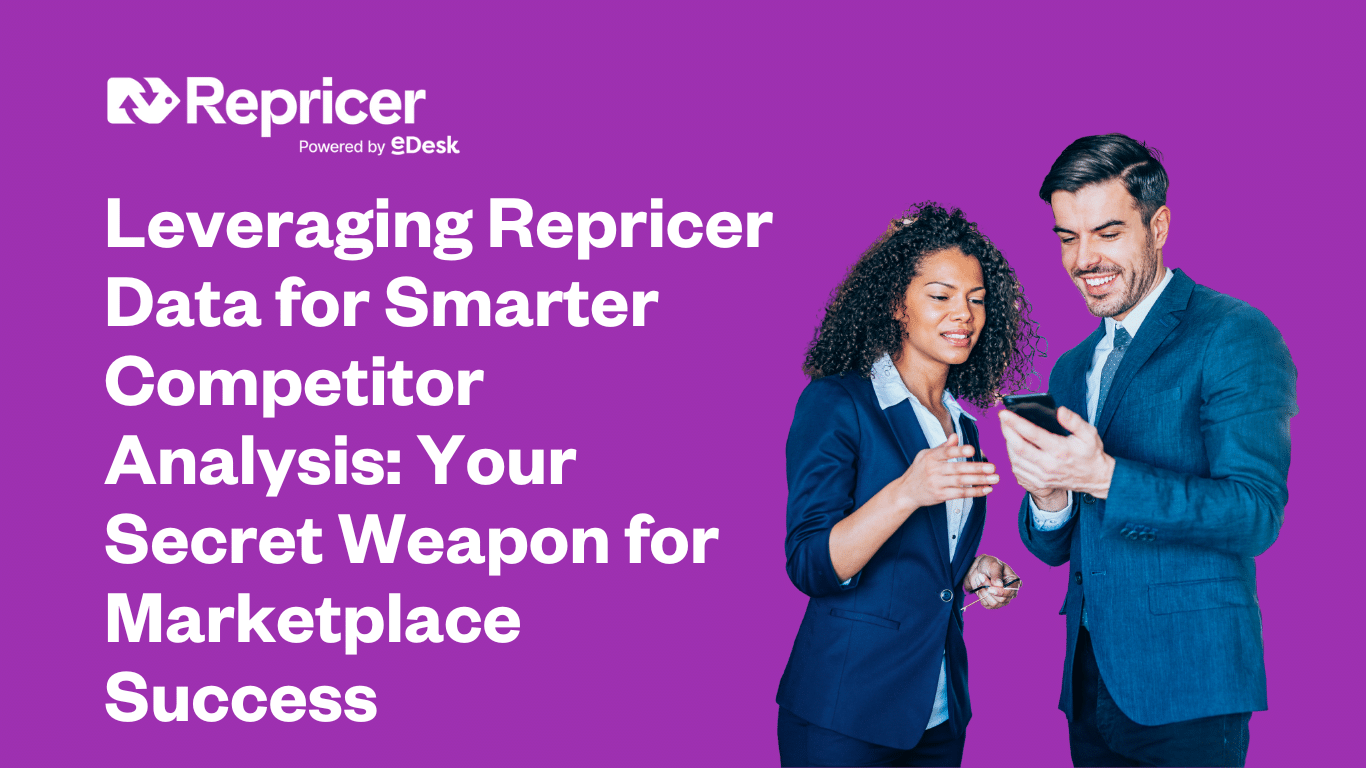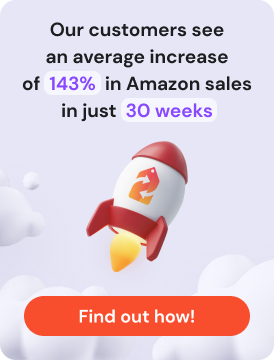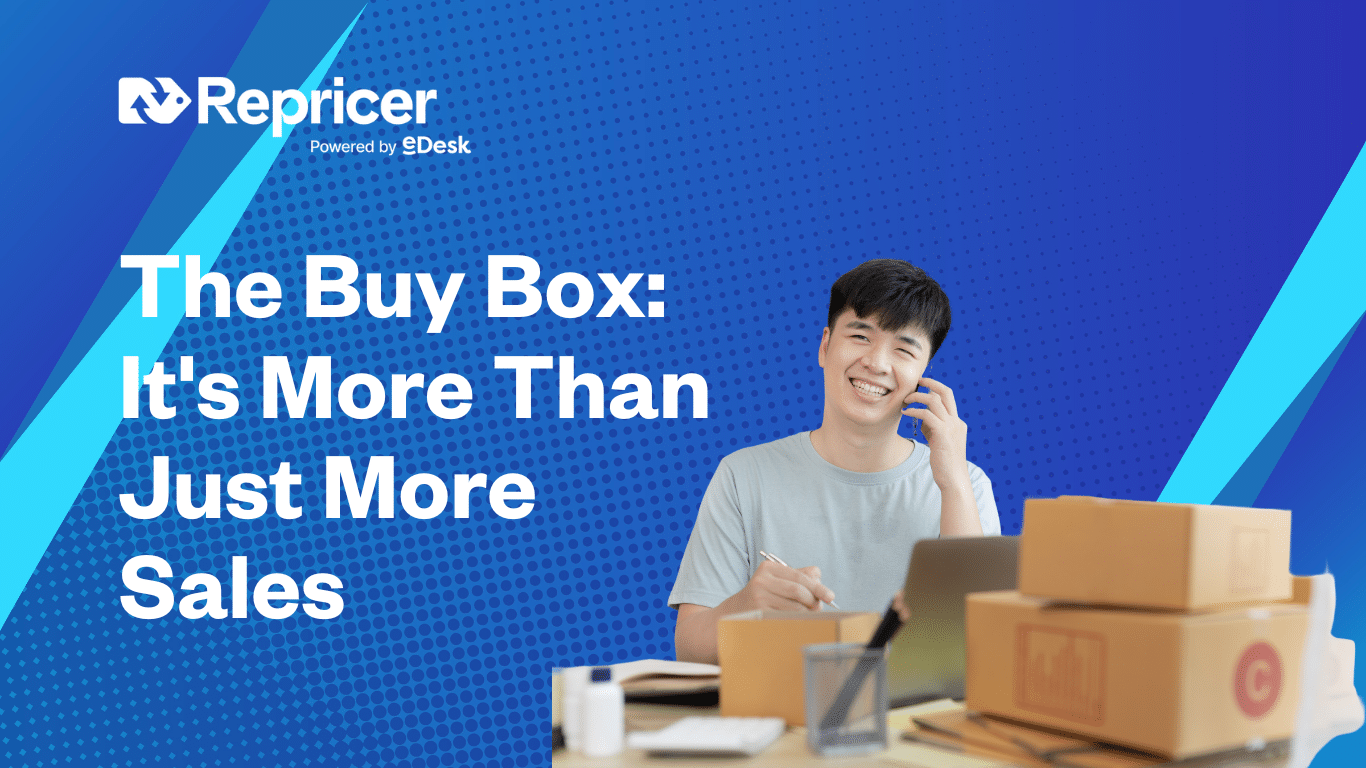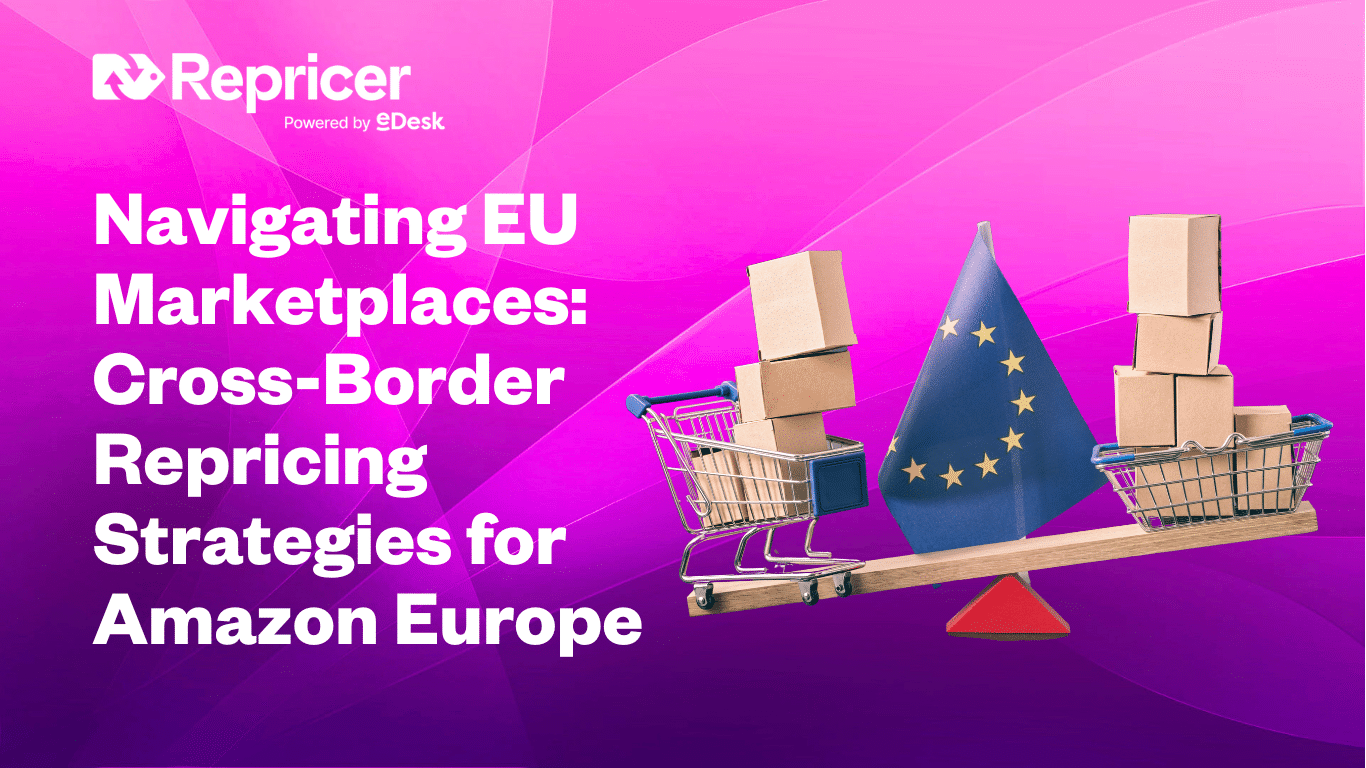Imagine this: You wake up one morning to find that your bestselling product has suddenly dropped from position #1 to #15 on Amazon’s search results. A competitor you’d never heard of is now dominating the Buy Box with prices that seem impossible to match profitably. Sound familiar?
If you’re like most data-driven sellers, you’ve probably experienced this frustrating scenario. The good news? Your repricer competitor analysis tools aren’t just execution platforms—they’re goldmines of competitive intelligence waiting to be unlocked.
The Hidden Treasure in Your Repricing Dashboard
With global eCommerce sales hitting $6.86 trillion in 2025 and growing at 8.37% annually, the marketplace has become more competitive than ever. Amazon alone accounts for 40.9% of total US retail eCommerce sales, representing $540.29 billion in gross sales. In this environment, understanding your competitive landscape isn’t just helpful—it’s essential for survival.
Most sellers view repricers as simple automation tools that adjust prices based on predetermined rules. But here’s what many miss: modern repricer competitor analysis tools collect massive amounts of data about your competitors every single day. This data includes who holds the Buy Box, their price change patterns, fulfillment methods, stock levels, and much more.
What Your Repricer Really Knows About Your Competitors
Your Amazon competitor tracking software and eBay seller monitoring tool are constantly gathering intelligence that goes far beyond basic price matching. Here’s the competitive data that’s available within most advanced repricing platforms:
Buy Box Analytics: Track which competitors win the Buy Box most frequently, at what price points, and during which time periods. This reveals patterns about Amazon’s algorithm preferences and your competitors’ strategic timing.
Price Change History: Monitor how often competitors adjust their prices, the magnitude of these changes, and their response times to market shifts. Some competitors might change prices hourly, while others stick to weekly adjustments.
Fulfillment Intelligence: See whether competitors use FBA, FBM, or a hybrid approach. This data helps you understand their cost structures and delivery capabilities.
Stock Level Monitoring: Track when competitors go out of stock and how quickly they restock. This information can reveal supply chain strengths, weaknesses, and seasonal patterns.
Geographic Presence: Understand which markets your competitors serve and their shipping capabilities to different regions.
Turning Raw Data into Actionable Intelligence
The key to effective pricing intelligence in eCommerce lies in transforming this raw data into strategic insights. Here’s how to leverage your repricer’s built-in analytics:
Market Positioning Analysis
Use your repricer’s filtering capabilities to segment competitors by price range, fulfillment method, or seller type. This helps you identify your true competitive set. For instance, you might discover that your main competition isn’t other third-party sellers but Amazon’s private label products.
Competitor Pricing Strategies Uncovered
Analyze price change frequency and patterns to understand each competitor’s strategy. Are they algorithmic price followers, strategic price leaders, or reactive price matchers? This intelligence helps you predict their next moves and position yourself accordingly.
Buy Box Win Rate Tracking
Your repricer can show you exactly how often you win the Buy Box compared to specific competitors. More importantly, it can reveal the price differentials required to capture and maintain Buy Box ownership against different seller types.
Advanced Filtering and Reporting for Deeper Insights
Modern repricing platforms offer sophisticated filtering options that let you drill down into specific competitive scenarios:
Competitor Type Filters: Separate data by Amazon, brand stores, authorized dealers, or unauthorized sellers to understand different competitive dynamics.
Time-Based Analysis: Compare competitor behavior during peak seasons, promotions, or specific days of the week to identify timing opportunities.
Product Category Insights: Analyze how competition varies across your product portfolio to identify which categories offer the best profit opportunities.
Performance Metrics: Track Insights like average selling price, velocity, and margin impact across different competitive scenarios.
Connecting Intelligence to Strategy: Rule Creation and Optimization
The real power of repricer competitor analysis tools emerges when you connect these insights back to your repricing strategy. Here’s how to translate competitive intelligence into profitable action:
Dynamic Rule Adjustment
Instead of static « match competitor pricing » rules, create sophisticated strategies based on competitive intelligence. For example:
- If Competitor A historically drops prices on Fridays, preemptively adjust your pricing on Thursday afternoons
- When a major competitor goes out of stock, temporarily increase prices to capture additional margin
- Identify competitors with slower repricing cycles and use rapid price adjustments to capture Buy Box share
Strategic Competitor Targeting
Your Analytics & Reporting capabilities can help you identify which competitors to target aggressively and which to avoid in price wars. Focus competitive pressure on sellers with:
- Higher fulfillment costs (FBM vs. your FBA)
- Smaller inventory positions
- Slower repricing response times
- Limited product variety
Seller Performance Metrics Integration
Connect competitive data with your own performance metrics to identify sweet spots where you can maintain profitable prices while staying competitive. This might reveal that you can command a 5-10% price premium in certain categories due to better reviews, faster shipping, or superior product bundling.
Real-World Application: From Analysis to Action
Let’s walk through a practical example of how to leverage repricer data for competitive advantage:
Scenario: You sell Bluetooth headphones and notice declining Buy Box win rates despite competitive pricing.
Analysis Process:
- Use your eBay seller monitoring tool to segment competitors by fulfillment method
- Analyze price change history to identify algorithmic vs. manual pricers
- Track Buy Box ownership patterns throughout the day and week
- Review competitor product variations and bundling strategies
Insights Discovered:
- Main competitor uses automated repricing but only updates prices twice daily
- Peak buying hours (7-9 PM) see less aggressive competition
- Competitors struggle with inventory during promotion periods
- Private label competitors have 15% lower costs but slower delivery
Strategic Adjustments:
- Implement rapid repricing during peak hours to capture the Buy Box during high-conversion periods
- Increase inventory ahead of competitor promotions to capture spillover demand
- Adjust pricing rules to be more aggressive against private label competitors while maintaining ‘premium’ against slower fulfillers
The Future of Competitive Intelligence
As the eCommerce landscape continues evolving, with 41% of online retailers already investing in AI for improved efficiency, competitive intelligence tools are becoming more sophisticated. Modern Repricer Features now include predictive analytics, machine learning-powered insights, and real-time market trend analysis.
The pricing software market is projected to reach $2.87 billion by 2031, with an 11.49% CAGR, indicating massive investment in these capabilities. Sellers who learn to extract maximum value from their existing tools today will be best positioned for tomorrow’s even more advanced features.
Your Next Steps to Competitive Mastery
Ready to transform your repricer from a simple automation tool into a competitive intelligence powerhouse? Start with these actionable steps:
- Audit Your Current Setup: Review what competitive data your current repricer collects and ensure you’re capturing all available insights.
- Implement Advanced Filtering: Set up detailed competitor segments based on seller type, fulfillment method, and pricing behavior.
- Create Intelligence-Based Rules: Replace simple price-matching rules with sophisticated strategies based on competitive timing and behavior patterns.
- Regular Strategy Reviews: Schedule weekly reviews of competitive intelligence to identify new threats and opportunities.
- Cross-Reference Performance: Connect competitive insights with your sales data to identify the most profitable competitive positioning.
Remember, How Competitor Analysis Boosts Repricing isn’t just about matching prices—it’s about understanding the complete competitive landscape and positioning your business for sustainable success.
The marketplace will only get more competitive. But with the right approach to leveraging your repricer’s competitive intelligence capabilities, you’ll have the insights needed to stay ahead of the competition while maintaining healthy margins. Your repricing tool isn’t just changing your prices—it’s revealing the blueprint for marketplace domination.




